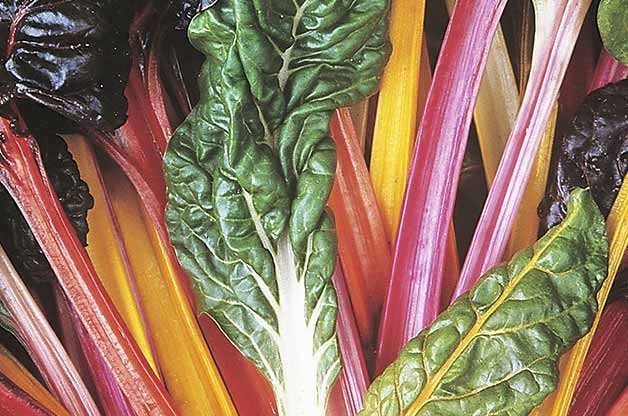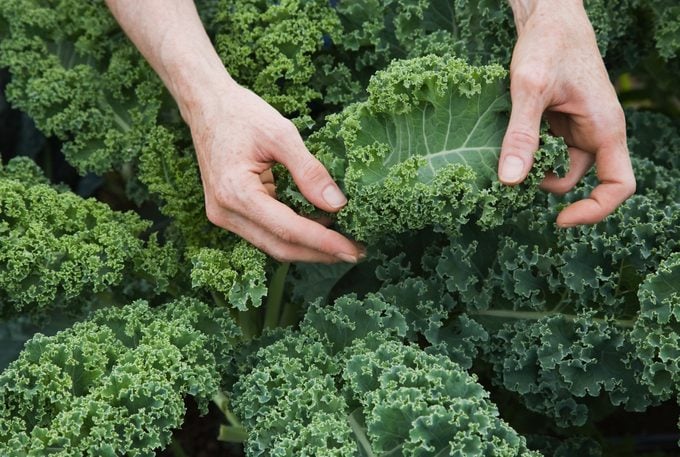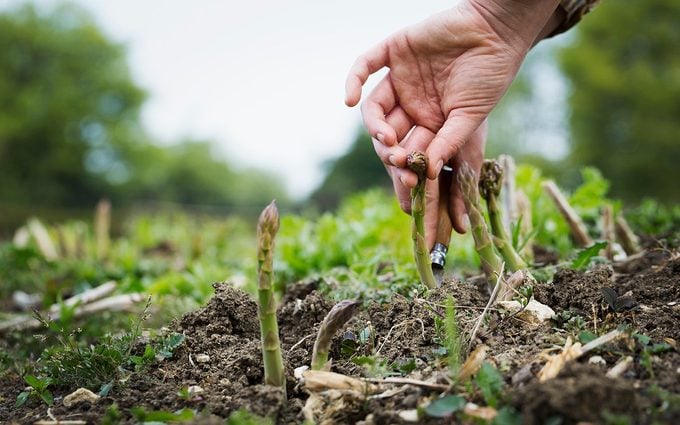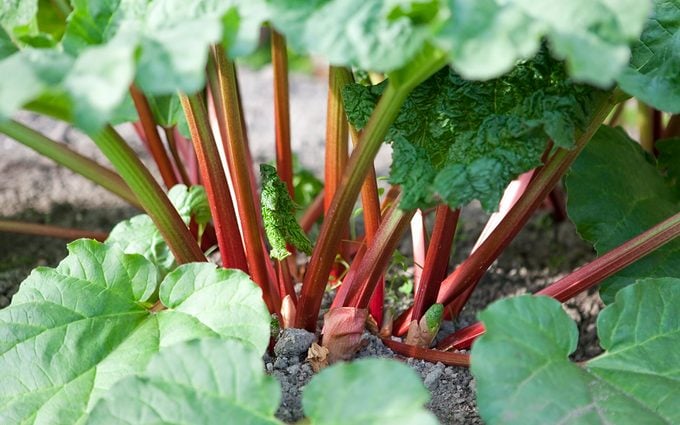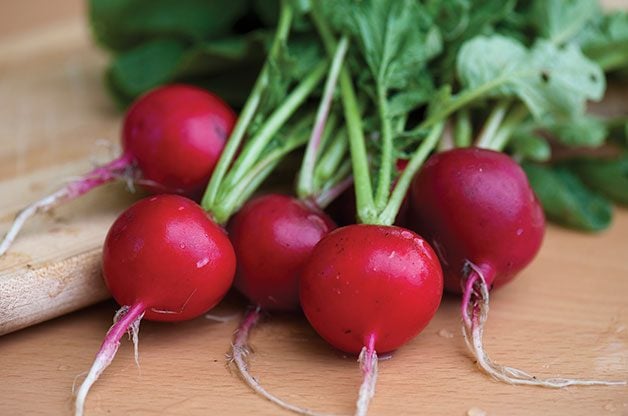13 Spring Vegetables to Grow for an Early Harvest
Updated: Jun. 14, 2022
No need to wait for summer to begin growing your vegetable garden! Try these top spring vegetables to get an early start on your harvest.
Our editors and experts handpick every product we feature. We may earn a commission from your purchases.
Some vegetables prefer cooler temperatures, making them perfect for springtime gardens. Start seeds in late winter and be prepared to set plants out as soon as the soil is warm enough, and you’ll enjoy the first spring vegetables and fruits of your labor before summer even arrives!
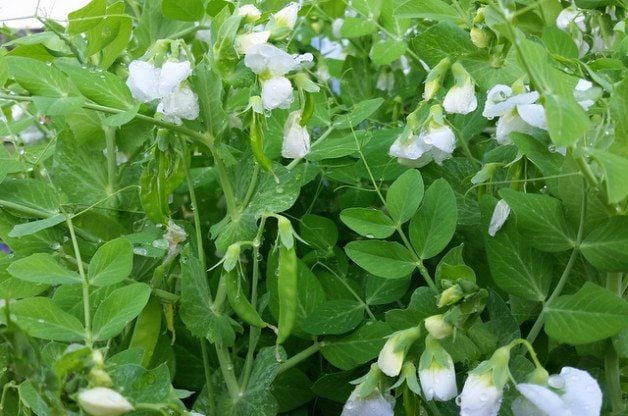
Peas
Pisum sativum
There are two basic kinds of peas: garden peas, which require shelling, and snow or sugar peas, which yield edible pods. No matter which you prefer, eat ’em with gusto, as these little spring vegetables are an excellent source of iron, protein, vitamin C and soluble fiber. Pass the peas, please!
Planting Advice: When soil is workable (near the end of March in cold climates), sow seeds 1 to 2 inches deep and 4 inches apart; 18 inches between rows.
Harvest Tips: Peas generally mature in 54 to 72 days, depending on the variety. Younger peas taste sweeter than more mature peas. Harvest garden peas when the seeds are visible, but before they get too big and the weather gets too hot. Pick edible-pod peas before the seeds fully develop. Use two hands: one on the vine, the other to pick the peas. Regular picking encourages continued pod production.
Top picks: Snowflake, Daybreak (early), Wando (summer)
Tasty Heirlooms: Amish Snap, Blue Podded, Golden Sweet, Green Arrow, Sutton’s Harbinger
Check out 10 seed catalogs every gardener needs.
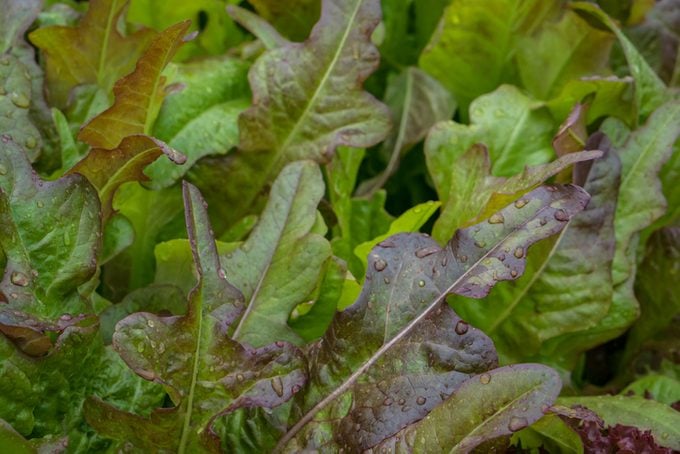
Lettuce
Lactuca sativa
Versatile lettuce is easy to grow, yields a bumper crop in small spaces and is largely pest- and disease-resistant. Plus, the yellow, bronze, pink and cherry-red varieties make great ornamentals—and add color to salads. What’s not to like?
Planting Advice: Around two weeks before the last frost, plant seeds in full sun or partial shade, 1/4 to 1/2 inch deep and 2 inches apart in fertile, well-draining soil. Thin seedlings to 12 inches apart. For a fall or early-winter harvest, sow seeds every two weeks, starting at least eight weeks before the first frost.
Harvest Tips: Ready to pick in 40 to 85 days. Use quickly; lettuce doesn’t keep long.
Top Picks: Buttercrunch, Green Ice, Little Caesar (Romaine).
Tasty Heirlooms: Amish Deer Tongue, Grandpa Admire’s, Gold Rush, Red Leprechaun, Susan’s Red Bibb, Yugoslavian Red
Learn how to make newspaper pots for starting seeds.
Kohlrabi
Brassica oleracea
There’s no polite way to say this: With its bulbous above-ground stem and spoke-like arms, kohlrabi looks a bit, well, odd—like a garden alien. But follow Mom’s advice and don’t judge this ugly duckling of the cabbage family by its outward appearance. Instead, focus on these spring vegetables’ pleasantly mild, sweet flavor, which lends itself to stir-fry, soups and stews, and its nutritional content, which includes vitamin C and potassium.
Planting Advice: About a month before the last expected frost, sow seeds in full sun and well-draining soil, 1/2 inch deep and 3 inches apart. Thin seedlings to 6 inches apart. Kohlrabies can withstand a bit of frost. For fall harvest, plant seeds about eight to 10 weeks before last typical frost date.
Harvest Tips: Most kohlrabi varieties mature in six to seven weeks, and taste best when bulbs are smaller—2 to 4 inches in diameter. Bigger bulbs tend to get woody and develop an off flavor.
Top Picks: For white stems, Express Forcer, Kolpack and Triumph. For purple, Blaro and Rapid.
Tasty Heirlooms: Delicatesse Blue, Delicatesse White, Early Purple Vienna, Early White Vienna
We found the top 10 vegetables that grow well in shade. Plus, discover how to store vegetables so they stay fresh longer.
Chard
Beta vulgaris subsp. cicla
Great taste and nutritional value. Prolific production. Low maintenance and high resistance to disease. Grows in shade and poor soil. Doubles as an ornamental, thanks to colorful leaves. Yup, chard definitely is the Swiss army knife of spring vegetables. (It’s also known as Swiss chard, but it’s not native to Switzerland.) Chard tastes amazing when sauteed in olive oil with garlic.
Planting Advice: About a week or two before the last-frost date, plant seeds (which actually are more like dried fruits that hold several seeds each) 1/2 to 3/4 inch deep, about eight to 10 seeds per foot. Thin seedlings so they’re 4 to 6 inches apart. A second planting is possible in late summer. Keep in mind that red-stemmed varieties are more likely to bolt.
Harvest Tips: When the outer leaves are 6 to 8 inches tall, cut them off about 11/2 inches above the ground; younger leaves pack more flavor. Don’t nick the terminal bud in the center.
Top Picks: Bright Lights (multicolored stems), Burgundy, Perpetual (white).
Tasty Heirlooms: Fordhook Giant, Lucullus, Oriole, Rainbow, Ruby Red
Psst—your gardening friends will love these 15 harvest-themed gifts.
Kale
Brassica oleracea
Kale is an unsung veggie-garden hero. This cabbage relative not only provides calcium, iron, potassium, cancer-fighting antioxidants and vitamins A, B and C, it also offers a sweet, earthy flavor. And cooler temps prompt kale to turn stored starch into sugars, which makes it taste even sweeter. It’s even OK to harvest it after it snows!
Planting Advice: When soil is workable, sow seeds 1/4 to 1/2 inch deep in full sun or partial shade, 4 inches apart. Or start seeds indoors six to eight weeks before last-frost date; set transplants two weeks before last-expected frost. When seedlings are 2 inches tall, thin to 8 or 12 inches apart. In fall, plant more seeds eight weeks before first-frost date.
Harvest Tips: To boost yield, harvest outer leaves when 8 to 10 inches tall. Or pick the whole head when plant is 10 to 12 inches tall.
Top Picks: Redbor, Winterbor, Blue Curled Vates
Tasty Heirlooms: Dwarf Blue Curled, Lacinato, Red Russian
Follow these tips for saving tomato and veggie seeds from your harvest.
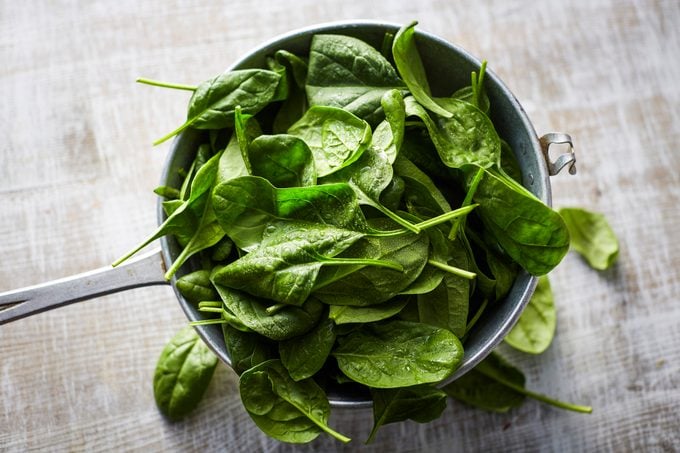
Spinach
Spinacia oleracea
Science has confirmed what Popeye knew all along: Spinach is good for you. Along with megadoses of vitamins A and K, plus folate, manganese, magnesium and iron, spinach includes flavonoids that can help fight certain cancers.
Planting Advice: Spinach thrives in cooler weather, so plant these spring vegetables in early spring as soon as soil is workable. Sow about a dozen seeds per foot about 1/2 inch deep, with about 1 foot between rows. Thin to 2 to 4 inches apart when seedlings are 1 inch tall. For an extended harvest, plant successive batches
for several more weeks. For late summer or fall plantings, chill seeds in a refrigerator for one or two weeks before sowing.
Harvest Tips: Matures in 39 to 48 days, depending on variety. Cut off leaves at ground level when they reach desired size; younger leaves taste better. When seed stalks form, harvest the rest of the crop.
Top Picks: Vienna, Giant Nobel (plain leaf), Indian Summer
Tasty Heirlooms: America, Bloomsdale, New Zealand, Red Malabar, Strawberry
Eager to start eating your veggies? Try these 10 fast-growing vegetables you can harvest quickly.
Asparagus
Asparagus officinalis
Afraid to grow these finicky bad boys? Don’t be. It’s easier than you think, and a smart budget move, since asparagus is expensive.
Planting Advice: Soak year-old crowns briefly in lukewarm water, then plant in well-draining soil when ground is workable. Dig a 6-inch-deep, 12- to 18-inch-wide trench. Create a small mound along the middle. Plant crowns atop the mound, with roots draped over the sides, about 12 to 18 inches apart, with rows 3 to 4 feet apart. Then bury the crowns 2 inches deep.
Harvest Tips: Asparagus plants take at least a year to get established, so don’t expect a first-season harvest; only lightly harvest in spring of second year. Cut spears at ground when they’re pencil-thick, or about 8 inches tall. Store ’em like cut flowers—upright in a container filled with an inch of water.
Top Picks: Jersey Giant, Jersey Prince, Viking KBC, Jersey Knight
Tasty Heirlooms: Conovers Colossal, Mary Washington, Precoce d’Argenteuil
Save time with 10 perennial vegetables that grow back each year.
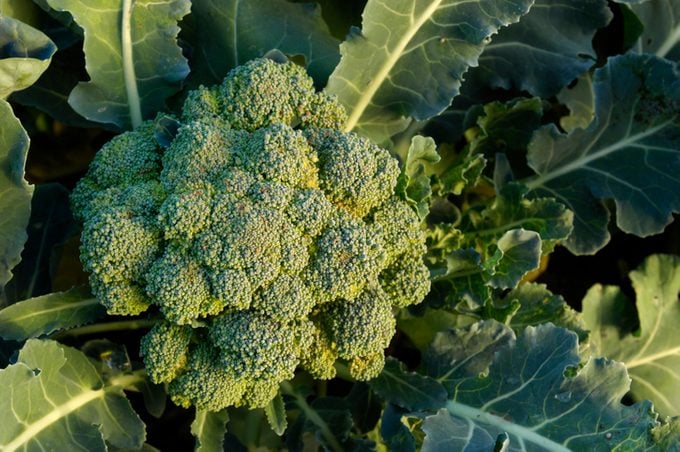
Broccoli
Brassica oleracea italica
Italian immigrants brought broccoli to America in the early 1800s, and gardens haven’t been the same since. And that’s a good thing. Broccoli contains vitamin C and beta-carotene, and is a good source of protein and fiber. Mangia!
Planting Advice: Start seeds indoors five to seven weeks before last frost. Three weeks before last frost, transplant seedlings 18 inches apart, planted a little deeper than they were indoors. Or sow seeds directly, just before the last frost, 1/4 to 1/2 inch deep and 18 inches apart. Space rows 36 inches apart.
Harvest Tips: Ready to harvest in 55 to 60 days, when the central head is 4 to 6 inches in diameter. Don’t wait too long, or florets will flower. Broccoli keeps in the fridge for a couple of weeks in airtight plastic bags. To freeze, cut the head into bite-sized chunks; leave a little stem on each piece. Cut stems into 1-inch lengths. Blanch for 3 minutes in boiling water, then dunk in ice-cold water for 3 minutes. Drain; store in airtight freezer bags for up to six months.
Top Picks: Green Comet, Green Goliath, Cruiser (drought-tolerant).
Tasty Heirlooms: Romanesco (bright-green whorled head), Calabrese, DeCicco
Make the growing season last longer with the top 10 fall vegetables to extend the harvest.
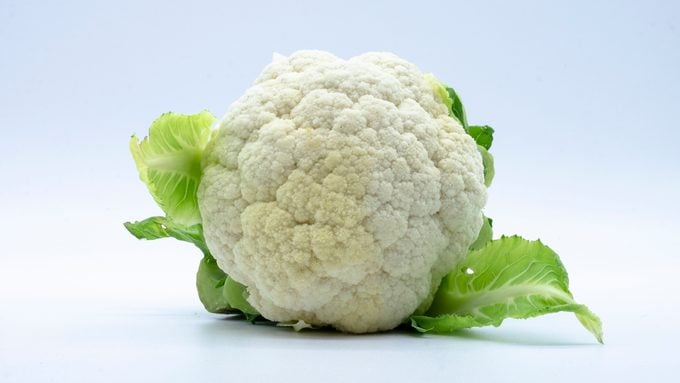
Cauliflower
Brassica oleracea var. botrytis
What kind of flower did Lassie wear to the doggie ball? A cauliflower! Jokes aside, these spring vegetables pack some serious health benefits—cauliflower helps fight heart disease and several kinds of cancer.
Planting Advice: Transplants work best. Plant seeds indoors 1/4 inch deep, five or six weeks before the last-frost date. About two weeks before the last frost, plant hardened-off seedlings in direct sun, 18 to 24 inches apart. For fall crop, start seeds 75 days before the first-frost date. To help the heads (curds) turn white and boost flavor, many varieties need blanching; loosely tie leaves around the heads when they’re egg-sized. Or buy self-blanching varieties.
Harvest Tips: Pick when curds are 6 inches across, white and firm (about seven to 12 days after blanching), with some outer leaves and 1 to 2 inches of stem attached.
Top Picks: Violet Queen (purple), Snow Crown (early), Andes (self-blanching).
Tasty Heirlooms: Early Snowball (self-blanching), Purple Cape
New at vegetable gardening? Try the top 10 easy-to-grow vegetables.
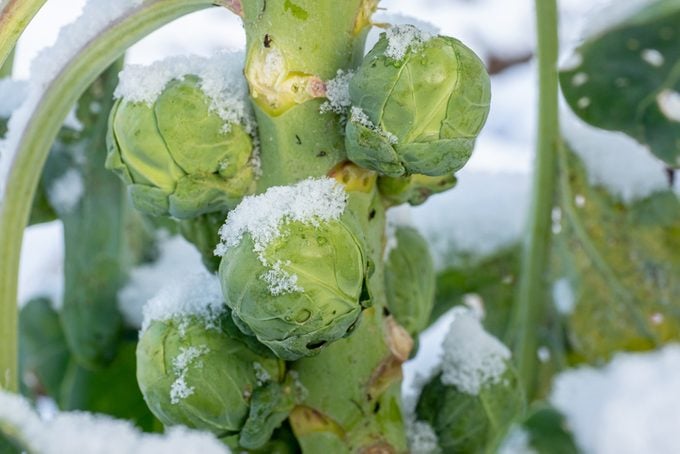
Brussels Sprouts
Brussels sprouts are tasty. Honest! As a kid, Mom probably force-fed you store-bought, overcooked and mushy sprouts. But when homegrown and properly prepared, these veggies are a nutty-tasting, full-flavored delight—and packed with vitamins and minerals.
Planting Advice: Sow seeds indoors four to six weeks before transplanting seedlings, about 90 to 100 days before the first expected fall frost. Plant these spring vegetables in full sun and well-draining soil, 2 to 3 feet apart, in rows 2 feet apart. Or sow seeds in the garden—about five seeds per foot, 1/4 inch deep—120 days before the first expected frost. When the seedlings are 4 or 5 inches tall, thin them to 2 feet apart. The plants will grow about 3 feet tall and produce 20 to 40 sprouts along each stem.
Harvest Tips: Pick in about 90 days, when the sprouts are firm and 1 inch in diameter, and before leaves turn yellow. Sprouts keep in the fridge for about 10 days in a refrigerated airtight bag, and up to a year if frozen.
Top Picks: Bubbles, Oliver, Royal Marvel, Rubine (red sprouts), Valiant.
Tasty Heirlooms: Falstaff (purple-red leaves), Long Island Improved
Snow won’t stop? Check out 10 winter garden ideas to keep green thumbs happy.
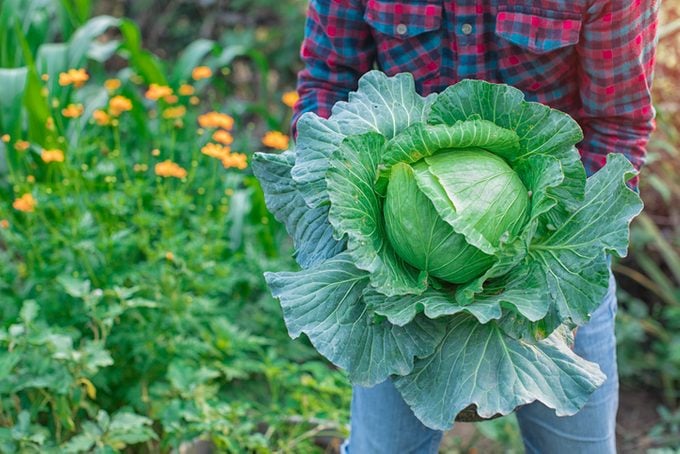
Cabbage
Brassica oleracea var. capitata
From coleslaw to sauerkraut, cabbage has clout. A member of the same family that brings you broccoli and brussels sprouts, cabbage is packed with vitamins K and C, iron and folate—and it’s inexpensive to boot. So cash in on the crunch!
Planting Advice: When soil is workable, plant seedlings in full sun, 12 to 24 inches apart and in rows spaced 24 to 32 inches apart. Or sow seeds about four weeks prior to the last average frost date, about 1/2 inch deep; later, thin seedlings to one every 12 inches. Extend your harvest by planting varieties with staggered maturation times.
Harvest Tips: Pick the heads after they’re firm and fully formed, and before they crack open. If you leave outer leaves intact, smaller heads may form for a later harvest.
Top Picks: Cheers (green), Savoy King (crinkly leaves, heat-tolerant), Red Meteor, Ruby Ball (red).
Tasty Heirlooms: Copenhagen Market, Early Jersey Wakefield, Mammoth Red Rock, Winningstadt
Follow the 14 top tomato growing tips for the ultimate crop.
Rhubarb
Rheum rhabarbarum
Spring vegetables that function as an easy-to-grow fruit—what a concept! Whether canned, frozen, or baked in pies, cobblers and breads, rhubarb’s pleasantly sharp, tart flavor blends with apples, cherries, and most berries.
Planting Advice: Grow from crown divisions or nursery plants. When soil is workable, or in late fall, plant crowns in full sun and well-draining soil, with the crown bud top 2 inches below the soil; plant 3 to 4 feet apart.
Harvest Tips: It will take rhubarb a year to become established, so don’t harvest until the following spring—and only lightly for a week or two, at that. Enjoy a complete harvest for eight to 10 weeks in the third growing season. Snap off each stem at the ground or twist the stem gently, as with celery. The leaves are poisonous; trim them off immediately. Refrigerate fresh whole stalks for up to 3 weeks in sealed plastic bags.
Top Picks: Canada Red, Cherry Red, Crimson Red, Ruby, Valentine.
Tasty Heirlooms: German Wine, Victoria
Radishes
Raphanus sativus
Good things do come in small packages—like radishes, tiny nutritional powerhouses full of potassium, vitamin C and fiber. The longer they grow, the spicier they get, so harvest them early for a milder flavor.
Planting Advice: When soil is workable, plant seeds 1/4 to 1/2 inch deep; thin seedlings to 1 inch apart (2 to 4 inches for winter radishes). In summer, sow a winter crop, which will take longer to mature but will last longer in storage.
Harvest Tips: These spring vegetables mature in 22 to 28 days; winter ones in 52 to 70 days. Harvest when roots are less than 1 inch across; larger for winter varieties. Spring radishes don’t keep long; winter varieties last for several months if kept cool and moist. Harvest before the ground freezes.
Top Picks: Champion, Easter Egg (various colors), Snow Belle (white). For winter harvest, China Rose, Round Black Spanish and Tama Hybrid (white).
Tasty Heirlooms: Cincinnati Market, French Breakfast, Helios, Philadelphia White Box, Plum Purple
Next, check out the 10 best peppers to grow in your veggie garden.


